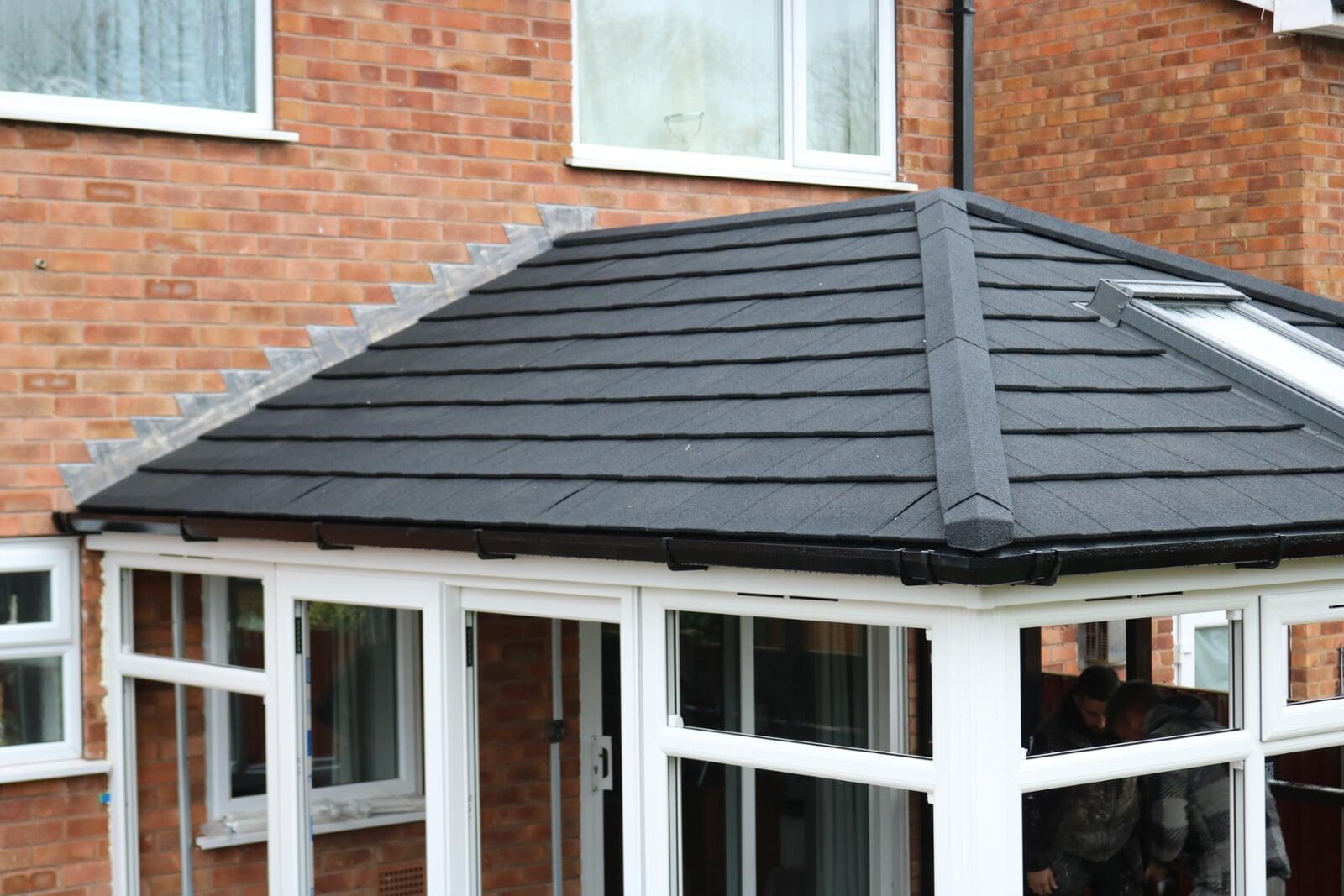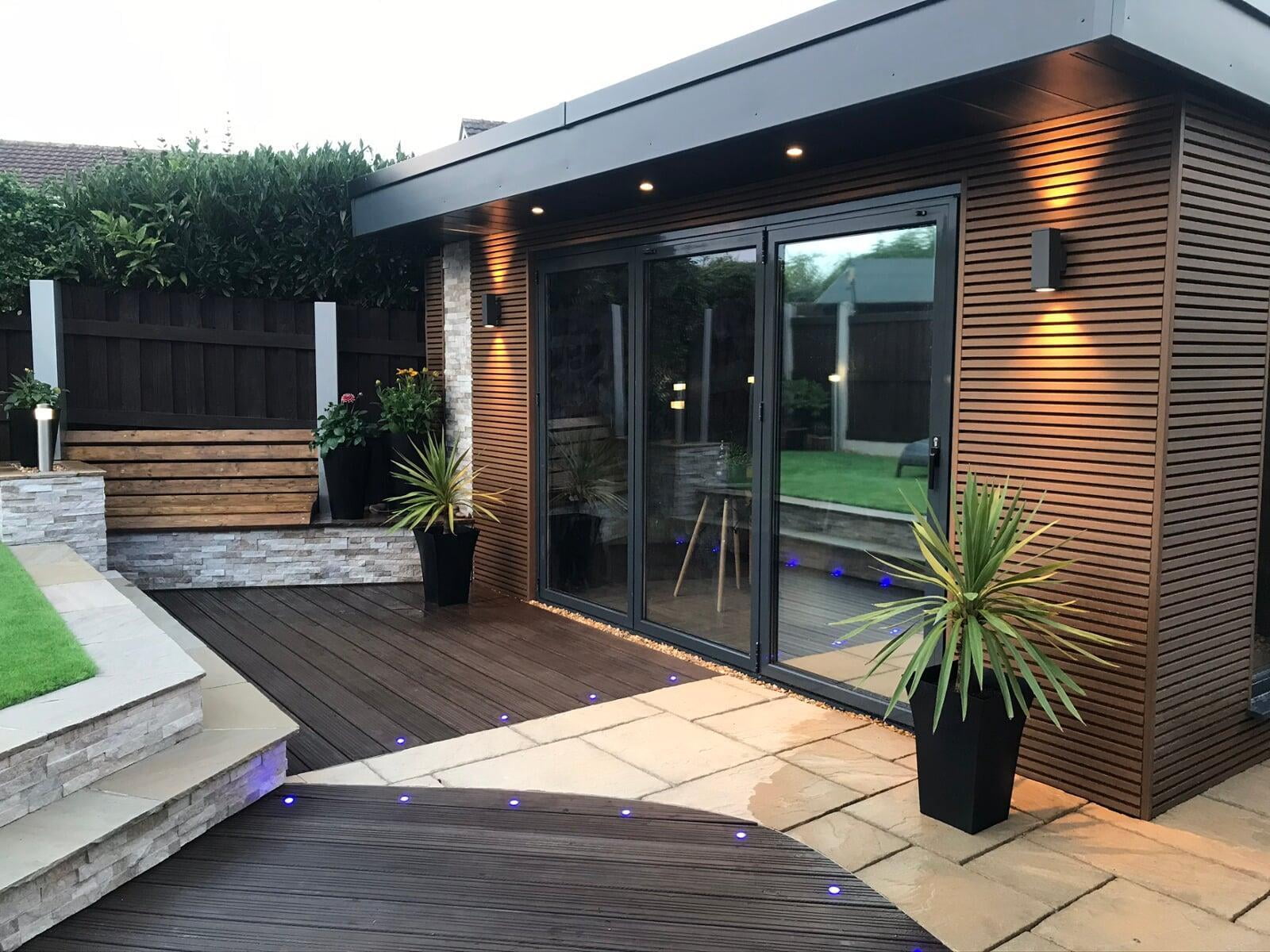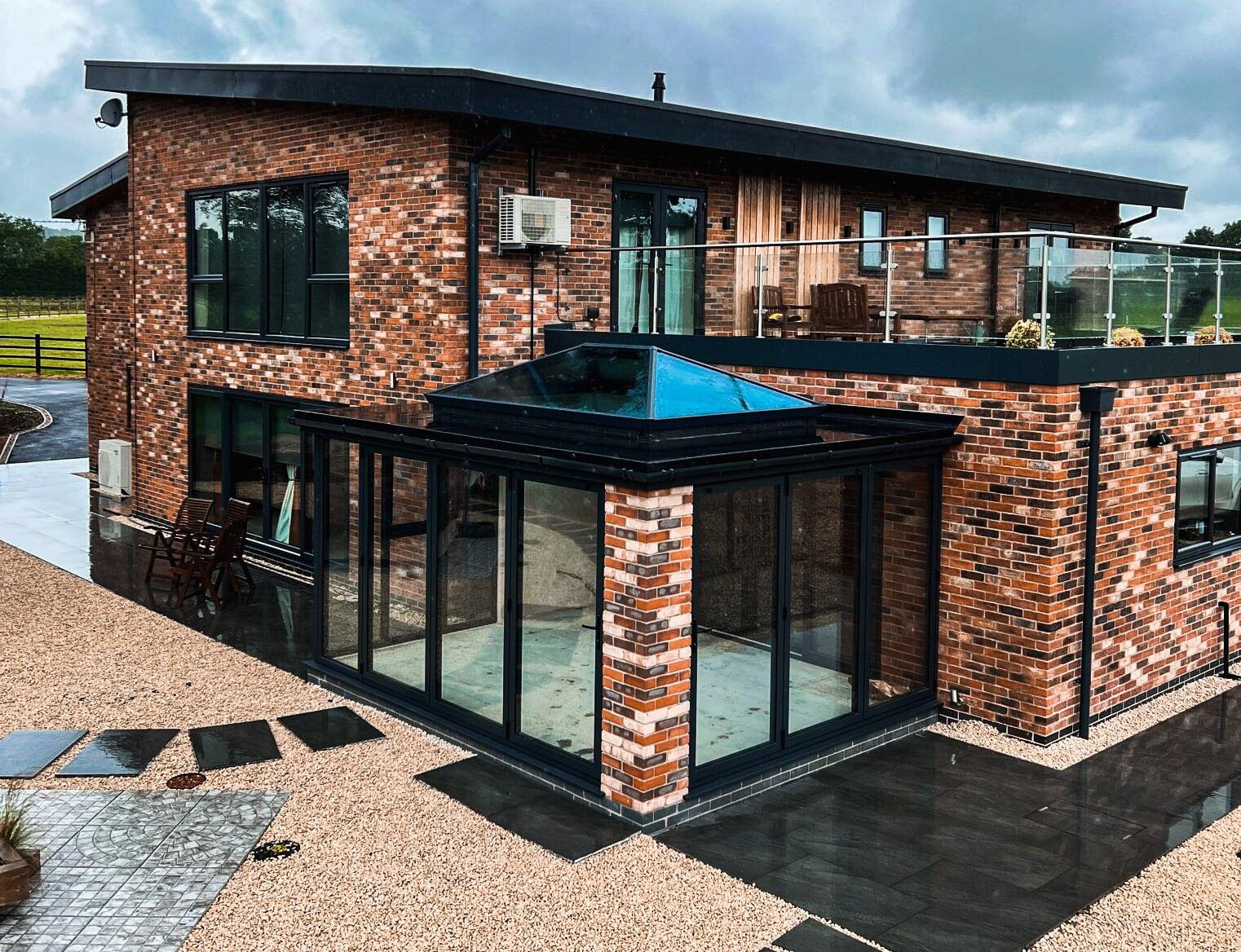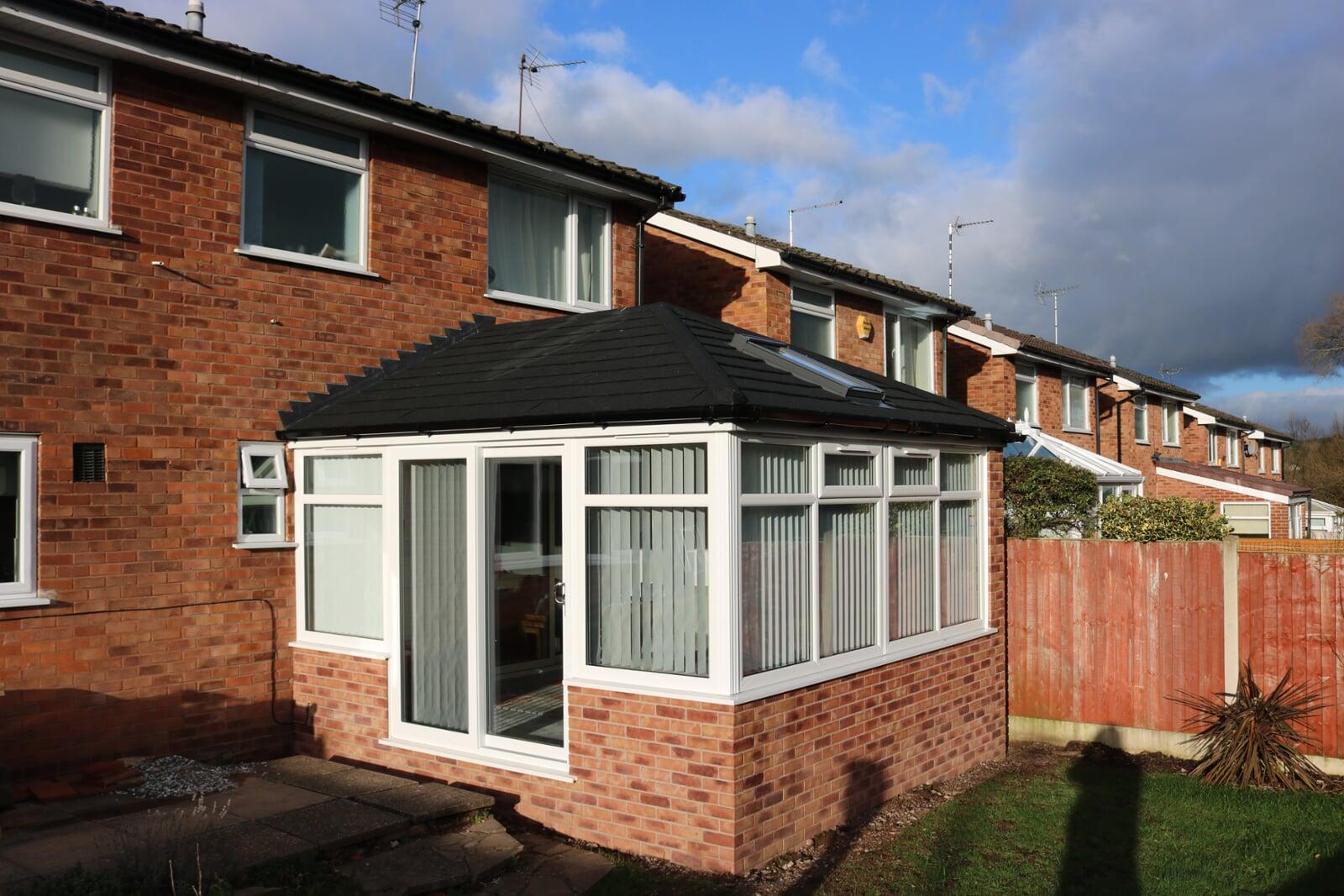Leka Solid Roof
When deciding on what kind of "Solid" roof to put on your conservatory or extension the first thing you will discover is that the market is full of different products made by an ever growing number of manufacturers. So how do you decide which one to choose? Of course every one will say there roof is the best and convincingly explain why another roofing system is no good!
One thing to bare in mind is that the company you choose to make your roof is just as important as the product itself. Do the manufacturers stand by the product with guarantees? Are they confident when your talking to them about the solid roof market and in particular how they are fitted? If your supplier can't give you the support you need as regards knowledge and skill then what's it going to be like if and when you run into an issue? That alone may rule out third party sellers, be wary of companies passing on roofs from manufacturers, some of them will have great prices i'm sure having done under table deals with system houses but do they really know anything about the product and will your roof be right when it comes to installation?
What options are available for your solid roof is an important factor too, some suppliers only provide one type of tile and that tile may be a nasty sheet like material made to look like tiles to cut costs. Others might only do a pitched roof where as a flat roof might be more appropriate to your needs, if your supplier does not have the range of product offerings then you can be sure they won't explore those options with you so finding a supplier with a broad product offering is key to finding the right solution. A prime example of this is the different insulation properties of your roof, dependent on where you are in the UK you may need different insulation levels for your local authority, if your supplier does not offer solutions for your area you may not get a product that satisfies regulations.
Finding a product that ticks all the boxes is difficult. We will look at a few of the common pitfalls when it comes to solid roofs to understand what you need to be looking out for.

Consistent, Continuous Insulation
You would assume that an insulated warm roof has continuous insulation all the way around the roof but you would be amazed to know that a lot of the solid roofs on the market do not have consistent continuous insulation. The roof plan shown opposite has 16 rafters in it, all of them approximately 50mm wide in most cases. In between those rafters which maybe 100mm deep on older systems and 130mm deep on newer systems is an insulation board which will vary from system to system but in most cases will be PIR insulation. The key thing to remember is whats happening inside those 50mm rafters? In most cases those rafters will be aluminium and HOLLOW. So every 600mm or so you have a void in between your insulation panels which will allow all that lovely warm air in your room to escape faster and make its way to the roof deck. Solution? Well two really, if you choose a timber system obviously those timbers will be solid but that just introduces another raft of problems which we will discuss in another blog however you could look for a system that insulates the rafter internals. Choosing a "Vapour Sealed" system with insulated internal rafters and insulation above the rafters will tick your boxes in this area and leave you with a true warm roof.

Condensation Risk
The main thing to look out for with a warm roof is if it really is a warm roof or not.... The NHBC definition of a warm roof is a roof that has a continuous layer of insulation directly below the water proofing layer. Now virtually all of the warm roof systems out there are not! I know....nuts right. This is all linked to "Cold bridging". By having a "Continuous" insulation layer below the water proofing layer you are completely isolating the rafter system and structure from the cold air externally and thus moisture by warming up the layer immediately below the water proofing layer. This type of roof is vapour sealed and prevents cold air flowing into the roof structure. These features of your warm roof will eliminate the risk of condensation within the roof. The image opposite shows an example of a warm roof construction, directly below the breathable membrane is an insulated top board which sits on top of the rafters, this system is also insulated within the rafter and is made of GRP further reducing the risk of cold metal forming condensation internally.

Resistance to Water
So what is the risk? Well let's assume your solid roof does not have adequate condensation and moisture protection and like 90% of the warm roofs on the market it is full of timber. These kinds of roof have "Moisture Resistant Timber Boards" (Usually marine ply or OSB) laid straight onto the insulation that sits in between the rafters. In this example we can see a high level of moisture penetration which occurred throughout the roof system both above and below the top board. Because the top boards are not insulated the roof should have been ventilated to prevent condensation build up. We don't know why this particular roof was so exposed to moisture however we can see the effect that the moisture had on the "Moisture Resistant Boards"!
Things can always go wrong with roofing and water is the enemy, choosing a roof system that has 100% moisture resistant materials will hold you in good stead should the worst ever happen, it can save you thousands of pounds in the long run.

Summary
So now it's time for me to tell you how our system is better than every one else's! Alutherm have had year's of experience with solid roofs and have chosen to manufacture a warm roof system that ticks all your boxes. If your looking for longevity and quality then choose a Leka Roof from Alutherm.
I hope that we have talked about some key points in this article to help back up our solution but if you are unsure please feel free to reach out to us.
Alutherm is a manufacturer of the Leka Warm roof product set which includes a tiled, insulated warm roof, a flat Orangery roof complimented by the Sheerline S1 roof lantern and the Leka Xi modular building. All of these products are made of GRP frame work which is a fantastic insulator and prevents cold bridging. Both of our roof systems have internal rafter insulation and are insulated directly below the water proofing membrane creating a continuous insulation layer making it a true warm roof. In addition to this our insulation is 130mm deep (PIR) and can satisfy u values as low as 0.11u with 0.10u on the horizon very soon. For our trade customers we provide extensive support and for DIY customers we are your one stop shop for getting that conservatory roof project moving.
Contact us today on 01785 503832 or click the "Find Out More" button below to read all about the Leka Warm Roof.







